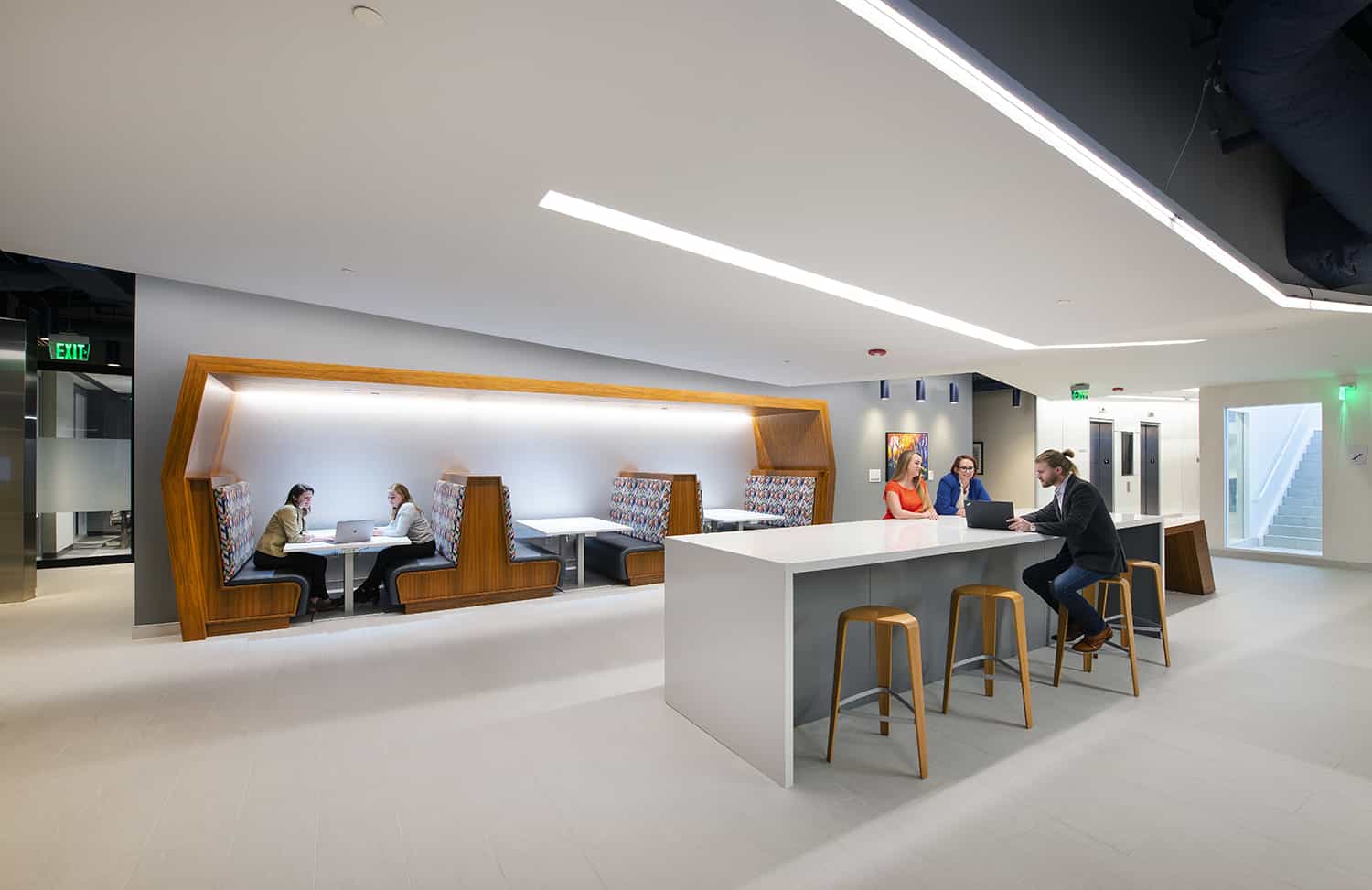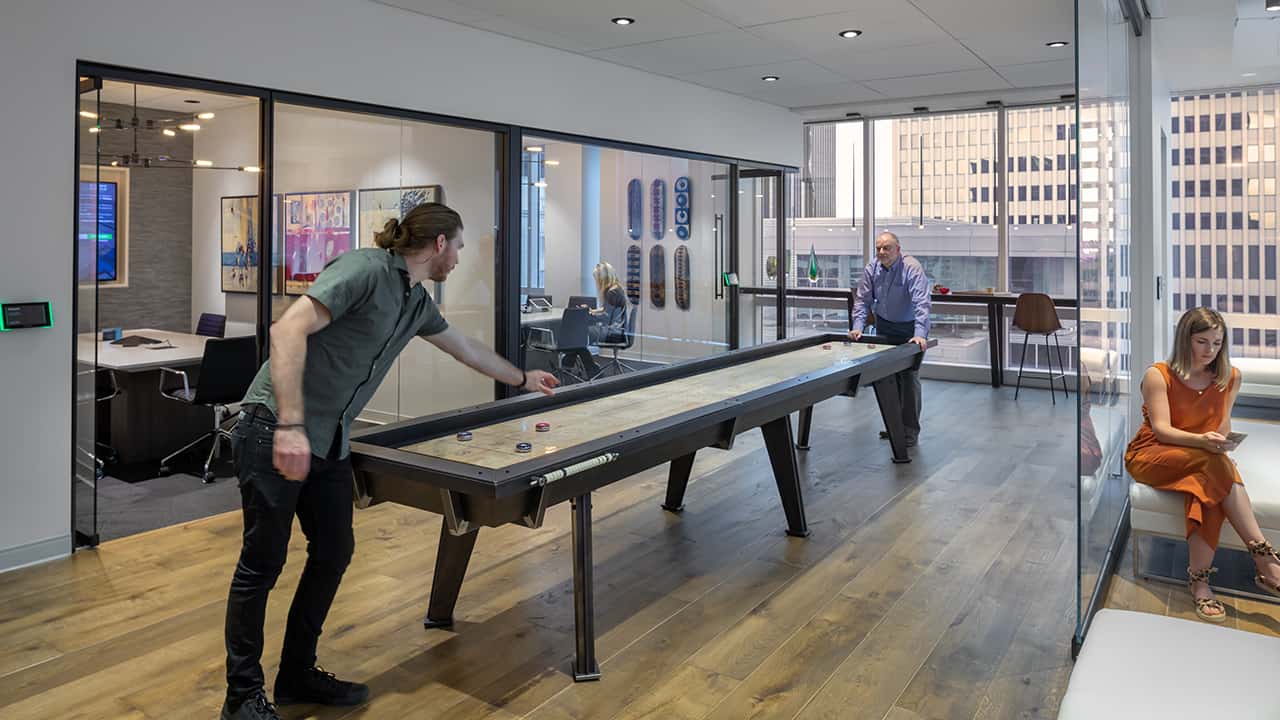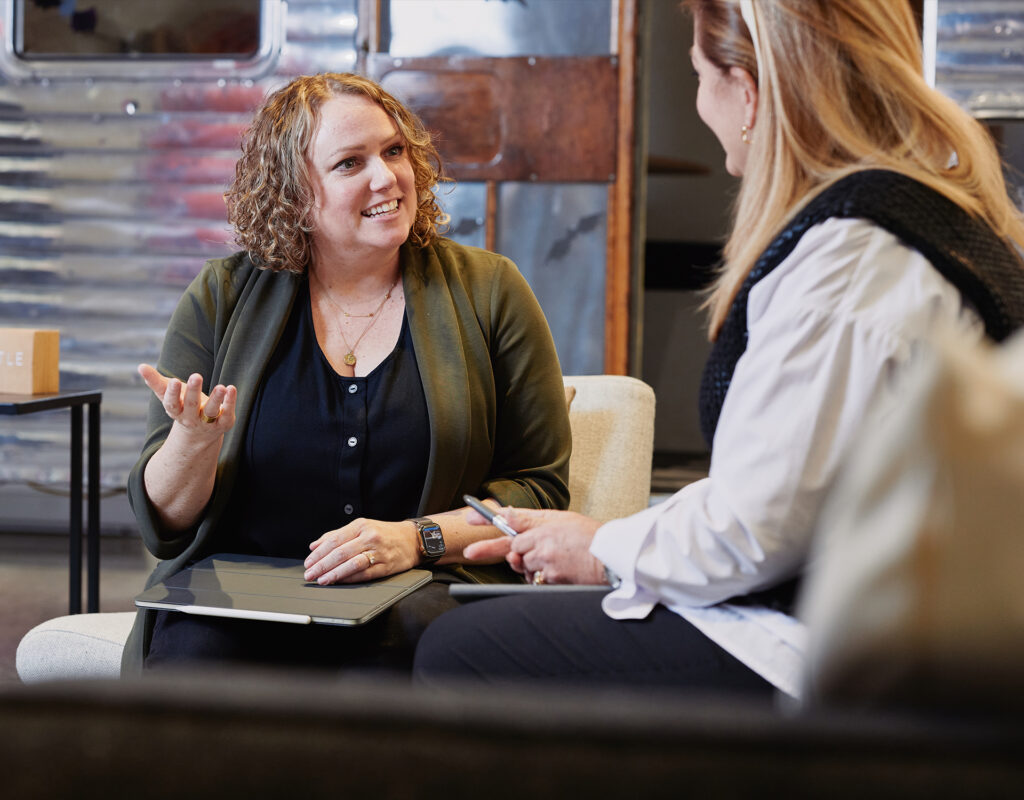Any designer worth their salt approaches design with intention—aligned with goals that will make the building functional and purposeful. While these are critical areas of focus, a far more provocative notion is to focus on the intended feelings the user will have or how they’ll respond or behave as a result of being in a place. For example, a client may ask for their lobby to feel ‘welcoming’ or for their place of worship to feel ‘uplifting,’ and with intention, people will feel like they belong and are greeted naturally by their host, or they’ll feel closer to their maker and act more righteous. But what if your intention is to make your managers collaborate more productively so that they can innovate— can a particular office setting cause that to happen? Or what if a company’s brand promise to its customers is ‘we always put our customers’ needs first’— how would you shape an experience that made the customer feel that this is a priority?
This is Experience Design, a critical step in the initial stages of designing a workplace, or any place for that matter. When done correctly, it provides the design team with a detailed depiction of how an experience unfolds for multiple user types while also providing direction for strategically locating significant elements or activities.
Experience Design (often referred to as ‘XD’ or ‘Experience Strategy’) has been gaining momentum for some time now, accelerated perhaps by the 1998 book The Experience Economy by B. Joseph Pine II and James H. Gilmore. The reason the ‘experience’ notion has gotten traction is that it resonates with all of us— the experiences that are worth remembering should be a central driver of design, not an accidental outcome. Experience Design is based on human-centered design principles, requiring research that results in a deep understanding of behaviors, habits and rituals. The process balances the goal of creating enhanced emotional connections with the goal of resolving functional solutions that appeal to our desire for convenience and simplicity.
When looking for examples of environments that are experience-driven, the retail sector has led the way, creating store designs that are immersive, participatory and engaging. Of course, that wasn’t always the case— for decades the primary reason to go to a store was comparison of features and price. As e-commerce has continually increased market share, stealing customers away from brick & mortar, retailers have had to consider a new purpose for their stores—it’s the unique experience their brand can provide. Where does the retailer start when considering ‘what kind of experience should our store provide’ (especially if ‘shopping’ is no longer the primary driver)? They begin by looking at their brand attributes, especially those that can be ‘activated’ through specific settings or behaviors. For example, an outdoor active lifestyle brand may have a refrigerated room so a customer can try out a high performance jackets, not only making a visit to the store fun and memorable, but an experience that can’t happen online. The list of examples goes on forever and we’ve seen some very creative experiences shaped by today’s progressive and change-savvy brands.
How can this be applied to the design of an office environment? To answer that question, one must first suspend thinking about the environment (at least for now). Rather, begin looking at the company’s brand position—what they stand for and how their customers and associates know these basic, yet important principles. When developing brand positions for clients, Little shapes brand objectives which stand as pillars that clarify and organize supporting notions and eventually actions. A similar process is employed when the same company hires an agency to create graphics, logos and collateral print/media material. These elements of their brand will have a unique position in the marketplace and even have a distinct ‘tone of voice.’ Shouldn’t the process be the same when considering the experience of being in their workplace? Moreover, since the company’s place of business should bring their brand to life, Experience Design can be a critical part of the equation in delivering on their brand promise. Often times, the actual experience is a ‘let-down’ because the promises made (in advertising/promotions, website, recruiting, etc.) aren’t obvious when you arrive as a guest or work at their office.

While Experience Design gives direct cues as to the look and feel of a place (i.e., “welcoming”= open, warm, light), its chief concern is focused on creating settings that promote a deliberate action or behavior. In order to cause the narrative to unfold in a sensible way, the experience designer choreographs the path of movement— the journey—in a way that will emphasize an intentional sequence. As important as the path and sequence is creating places of emphasis—signature moments—that call attention to an important aspect of the brand or an activity that highlights an intentional behavior. The net result of creating a workplace that matches the brand is improved talent acquisition and employee retention resulting from associates that live the company mission and visitors that see the brand come to life.
In today’s interconnected world, Experience Design seeks to unify experience across multiple touchpoints— online vs. in-place, private vs. group setting. In addition, today’s workplace must provide hybrid options that emerging professionals demand (cafés, lounges, play spaces), and therefore Experience Design must reconcile the variety of experiences and incorporate a multi-disciplinary approach.
We live in a world where we have seen proof of concept that most office employees can work from home effectively. Why have an office at all? Let’s return to our retail sector example: like retail, a company is more than the service or product it sells. If the brand is to come to life and reach its full potential, then the experience of engagement is the critical missing piece resulting from everyone working remotely. Now more than ever, companies considering their workplace should require an Experience Design-driven process.
View our Beyond Workplace book on Issuu here.

